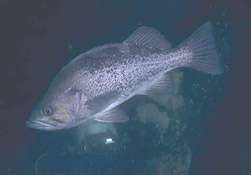Surviving the Deeps returns today with a much-anticipated post about what to eat if you’re stranded (or visiting) undersea. The possibilities are endless, so we’ll focus on a few favorites for sprites and humans alike. But be warned–edible plants have many poisonous lookalikes. So be sure you know what you’re eating!
1. Octopus. These slimy creatures are found in fancy restaurants, sea-side bars, and home kitchens alike. Some people even eat them alive. Gross. A choking hazard, too. We recommend eating octopus grilled, fried or baked. Here’s some recipes if you want to try making it yourself.

2. Flower Limu (Laurencia). An astounding number of limu (Hawaiian word for algae) can be prepared to make delicious dishes. They are found on reefs and rocky or sandy areas at low tide and require careful cleaning to remove gritty debris. Limu is often salted and served mixed with other seaweeds or with fish, octopus, or beef (You won’t be finding beef undersea. Hunting taurocamps is strictly forbidden in the sprite world). If you want to know more about identifying and cooking limu, check out this great poster.
3. Kelp is another edible algae (Laminariales). More than twenty different species can be found in the Northern Pacific Ocean alone. It grows in beds along the sea floor or in kelp forests, which stretch toward the surface. Special roots called holdfasts anchor the plant while a slender stalk supports its leafy fronds. Some kelp have a gas-filled bladder that helps them stay bouyant enough to remain upright. The fronds are the best part to eat and are delicious raw. Even better, add them to ramen or stir fry (unless, of course, you are stranded undersea. In which case, raw is the only option unless you are fortuitous enough to be near a thermal vent.) More tips on how to prepare and eat kelp here.

4. Black rockfish (Sebastes melanops). You may notice a few of these swimming alongside the giant kelp in the picture above. What better place to snag a little meat to go along with your veggies? Black rockfish, sometimes known as black snapper, black bass or Pacific Ocean perch (among other names) make for some good eating. In contrast to its cousin, yellow-eye rockfish, this species continues to thrive despite heavy fishing. Whether baked, fried, or stuffed with crabmeat, rockfish is a treat! Recipes abound online.
5. Green feather algae (Caulerpa). This pretty plant is found in many undersea locations around the world. It prefers sandy soil along coastlines. In Costa Rica, it’s considered invasive and is creeping over the coral reefs. So, if you consume feather algae there, you’re actually doing the reef a favor! This veggie is high in antioxidants, too. So, eat up! Enjoy it raw in salads or on sandwiches or cooked in coconut milk. A word of caution–some people may have an allergy to green feather algae. So, if your mouth goes numb or you start to get dizzy, better try something else instead! If you really want to dive into sea plant eating, bring along this guide. It’s a bit hefty, so you might want a digital copy on your waterproof reader!
Once again, Surviving the Deeps is not responsible for any sea-cuisine-related deaths or disasters including, but not limited to attacks by angry octopi, trip or entanglement hazards in the form of algae, sea grass, or corals, or poisonings due to misidentified foods. Please take care to stay out of the established hunting and gathering territories of unfriendly mages or sea monsters.
Upcoming lesson: How not to be eaten undersea.
Until then, swim safe, dive deep, and stay alive!
What are your favorite sea foods? What new and strange foods would you like to try?


